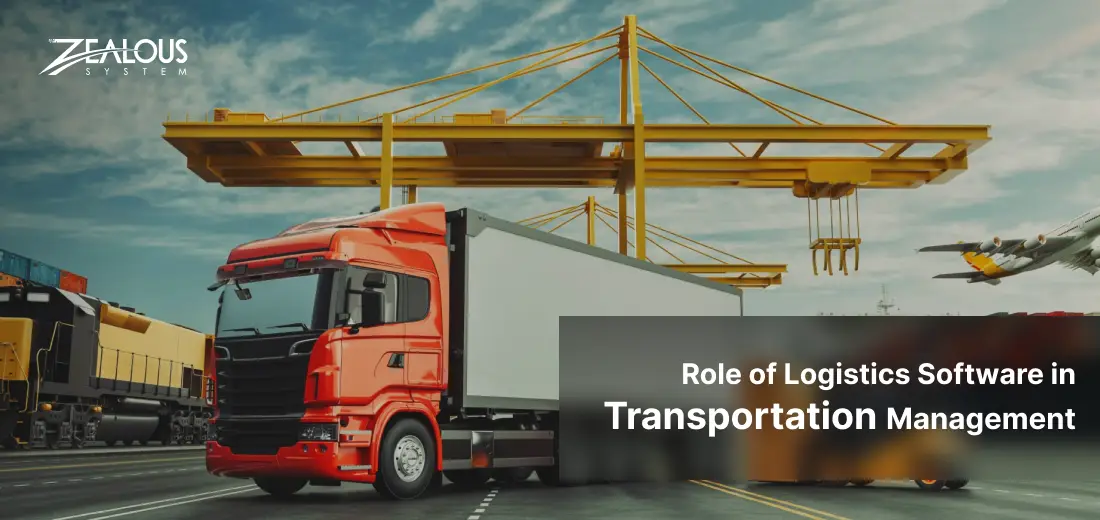


Transportation management, a key component of logistics, involves planning, executing, and optimizing the movement of goods. With the increasing complexity of supply chains and customer demands, traditional methods of managing transportation are no longer sufficient. This is where logistics software comes into play, offering businesses the tools they need to streamline transportation management and stay competitive.
Logistics software solutions have revolutionized transportation management by providing real-time visibility, automation, and advanced analytics. These tools are designed to optimize routing, improve fleet management, track shipments, and enhance overall efficiency.
Whether you’re managing a small local delivery service or coordinating shipments across continents, logistics software simplifies complex processes, reduces costs, and improves service delivery. As the logistics industry continues to grow, the need for digital tools to enhance transportation management has never been greater.
In this blog, we’ll explore the various ways logistics software can streamline transportation management, highlighting its benefits and key features. We’ll also look at how adopting logistics software can not only improve operational efficiency but also help businesses meet customer expectations, reduce environmental impact, and ultimately drive growth.
Logistics software refers to a suite of tools and applications designed to manage and optimize the transportation of goods. These software solutions offer businesses the ability to manage fleets, track shipments, automate scheduling, optimize routes, and collect valuable data to make informed decisions. Logistics software integrates various functions within a business’s supply chain to improve overall performance, efficiency, and profitability.
In transportation management, logistics software serves as the backbone of operations. It empowers businesses to manage the flow of goods from origin to destination in a seamless manner. By providing real-time insights, logistics software enables businesses to make proactive decisions, minimize delays, and streamline their operations.
TMS solutions can be used by businesses of all sizes, but they are especially useful for those with complex supply chains or high shipment volumes.
Logistics software allows businesses to track their orders throughout the entire delivery process. It updates them on the status of each shipment, from departure to arrival, so they can keep customers informed and manage expectations.
The logistics software plans and suggests the most efficient routes for deliveries. It considers factors like traffic, distance, and road conditions to reduce travel time and fuel costs, helping businesses save money and improve delivery times.
Businesses use the software to select the most suitable carriers for their needs. It assists in negotiating shipping rates and booking shipments, ensuring they get the best service at the lowest cost. This makes managing relationships with carriers simpler and more efficient.
Logistics software helps in monitoring and maintaining appropriate inventory levels, ensuring that the right products are available when needed. Inventory management system minimizes shortages and enhances customer satisfaction.
Logistics software automates the creation and handling of shipping documents. It ensures all documents are accurate, complete, and readily accessible, which simplifies compliance with regulations and streamlines record-keeping.
The software tracks transportation expenses and provides insights into spending patterns. It helps businesses identify areas where they can cut costs and optimize their budget by analyzing transportation data and costs.
Businesses use the software to generate detailed reports and analytics on their transportation activities. It helps them assess their performance, understand trends, and identify opportunities for improvement, leading to more efficient operations.
One of the key features of logistics software is its ability to optimize delivery routes. The software uses real-time data, such as traffic conditions, weather patterns, and delivery deadlines, to suggest the best routes for each shipment.
This helps reduce fuel consumption, cut down delivery times, and improve fleet productivity. With automatic rerouting, businesses can adapt to disruptions like road closures or traffic congestion, ensuring timely deliveries even in the face of unforeseen events.
This software keeps all your information up to date and accessible to all team members, significantly reducing the risk of error. You can track drivers and sales, and access any information at any time.
Logistics software plays a vital role in managing a fleet of vehicles. Through real-time tracking, businesses can monitor the location of vehicles, track their performance, and schedule necessary maintenance to prevent breakdowns.
The software also analyzes driver behavior, such as speed and fuel consumption, helping businesses improve efficiency and reduce costs. Fleet managers can schedule routes, ensure compliance with safety regulations, and maximize vehicle utilization, which ultimately leads to a more efficient and cost-effective operation.
With logistics software, businesses can offer real-time tracking of shipments, allowing both businesses and customers to monitor the status of goods in transit. This feature enhances transparency and provides customers with up-to-the-minute updates on delivery times and locations.
For businesses, real-time tracking helps identify delays early, enabling them to adjust and take corrective actions before a disruption occurs. It also helps build trust with customers, as they can track their orders at any point in the delivery process.
Logistics software automates many time-consuming, manual tasks like dispatching, scheduling, invoicing, and documentation. Automation not only saves time but also reduces the risk of human error.
With logistics software in place, businesses can eliminate paperwork, streamline workflows, and improve overall efficiency. This allows staff to focus on more strategic tasks, such as improving customer service or optimizing routes, instead of dealing with administrative burdens.
Logistics software helps businesses reduce operational costs by improving routing efficiency, optimizing fleet performance, and minimizing downtime. By analyzing historical data on fuel consumption, delivery times, and fleet usage, logistics software can identify cost-saving opportunities, such as renegotiating carrier contracts or adjusting delivery schedules.
Logistics software enhances customer service by ensuring timely deliveries, improving communication, and offering transparency throughout the shipping process. Customers appreciate the ability to track their orders in real time and receive accurate delivery windows.
Additionally, with automated notifications and alerts, customers are kept in the loop about any changes or delays. By improving delivery performance, businesses can increase customer satisfaction, leading to higher retention rates and repeat business.
As businesses increasingly focus on sustainability, logistics software plays an important role in reducing environmental impact. By optimizing routes, logistics software helps reduce fuel consumption and carbon emissions.
The software can also help businesses track their sustainability goals, providing the data needed to report on environmental efforts and meet regulatory standards. Reducing emissions and fuel use not only benefits the environment but also enhances the company’s reputation as a socially responsible business.
Before you start developing your logistics management software, it’s important to define your goals clearly. Think about what you want the software to accomplish for your business. This could mean speeding up delivery times, cutting costs, or getting better insights into your supply chain.
To measure success, decide on key performance indicators (KPIs) like how accurate deliveries are, how much you save, or how satisfied your customers are. Look at the problems you currently face in your logistics processes and how the software can solve them.
Knowing exactly what you want and need will set a strong foundation for the project and guide the development process.
Selecting the appropriate technology is crucial in building logistics management software. Research various technology stacks and platforms that can support your specific needs, taking into account factors like ease of use, integration capabilities, and vendor support.
It’s important to choose technology that is scalable, ensuring that it can grow with your business and accommodate future expansion.
Designing both the user interface (UI) and database simultaneously is a key step in the development of logistics management software. Begin by creating a user-friendly UI that allows for easy navigation and efficient task completion. This involves developing wireframes and mockups to visualize how users will interact with the software.
Design a database schema that efficiently stores and manages all necessary logistics data, such as shipment details, inventory levels, and route information. Make sure the UI design and database structure are well-integrated, so that data flows smoothly between the two and the user experience is seamless.
During the development phase, your software team, or if you choose to hire developers, will build the logistics management system, incorporating crucial features such as order processing, inventory tracking, route planning, and reporting. Using agile development practices, the developers you hire will work iteratively, allowing for regular feedback and adjustments based on real-world testing and user input.
It’s important to continuously test and refine the software throughout development to ensure it meets operational needs and performs as expected. By focusing on iterative development and ongoing testing, you can create a system that is both functional and adaptable to your business requirements.
Thorough software testing is essential to ensure that your logistics management software functions correctly and meets user expectations. Begin with unit testing to examine individual components of the software, ensuring they operate as intended. Follow this with integration testing to evaluate how these components work together, verifying that data flows seamlessly and features function properly in combination
The deployment phase marks the transition of your logistics management software from development to active use. Begin by setting up the software on your chosen infrastructure, whether it’s on-premises servers or cloud-based platforms. Carefully configure all components and ensure that integrations with other systems are seamless.
Provide training to your team to familiarize them with the new software and offer support resources to address any questions or issues. After deployment, monitor the software’s performance and gather feedback from users to make any necessary adjustments.
Logistics software development is a vital tool for succession in the complex world of global trade. When developing custom management logistics software, a careful approach is needed, including setting clear goals, choosing the right technology, designing a user-friendly interface, and thorough testing.
When the software is ready to use, it becomes a practical tool for making logistics operations smoother and achieving success in the global trade world. Using logistics software is not just helpful; it’s necessary for businesses that want to do well in the modern economy.
Our team is always eager to know what you are looking for. Drop them a Hi!
Comments